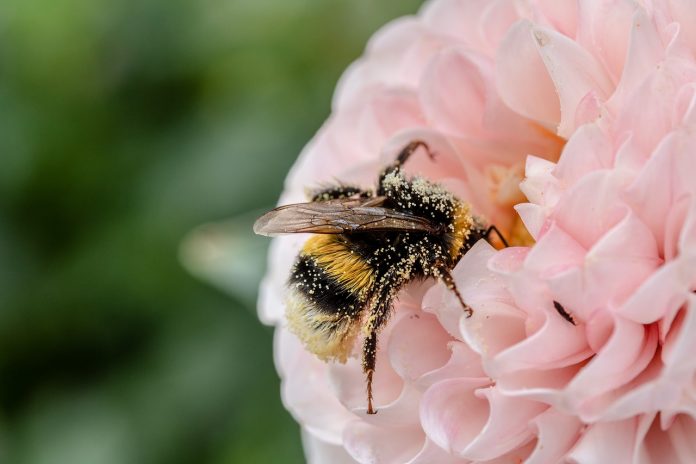Have you noticed any lethargic or distressed bees in your yard? If you notice bees that appear disoriented and are unable to fly, excessive numbers of dead bees or few bees foraging in your yard, it may be because of the pesticides you’re using in your garden.
Fortunately, there are ways to protect your garden plants from pests without harming pollinators.
Home garden control methods to protect pollinators
Leave some plants alone. Pollinator plants like milkweed should always be left alone. Not only are they frequently-visited sources of nectar, but they are also host plants for butterflies.
Inspect plants. Before bringing new plants home from the nursery, ensure pests aren’t present. If you never introduce them to your garden, you won’t have to worry about eradicating them.
Choose more native plant varieties for flower beds. Native plants are just equipped to grow better in your backyard. Years of adaptation of made them especially suited to the soil, climate and pests. They will need less maintenance and are better for pollinators.
Accept a reasonable level of pest presence. A certain level of pest presence is tolerable and the affected plants should only be treated if it becomes excessive. For example, caterpillars chew holes in the leaves of host plants. However, this is part of nature’s process and the purpose of those plants.
Wash away pests. Using the hose to wash away aphids and other pests is preferable to chemical intervention. It may take a couple of attempts to prevent them from returning and they may keep returning, but this is a good first line of defense.
Only treat affected plants. Rather than blanket treating your garden with pesticides, it’s better to limit pesticide use by only treating the affected plants.
Use insecticidal soap. Insecticidal soap is a non-toxic pesticide that’s safe for people and beneficial insects when it’s dry and is safe to use on most plants.
Space plants correctly. When planting your garden it’s best to space plants baked on their mature size and periodically thin plants to allow for adequate airflow. When there’s not enough air circulation, plants will retain moisture and more easily allow mold, mildew and fungus to take over.
Use rubbing alcohol. Scale insects can be dabbed away with a cotton swab dipped in rubbing alcohol.
Remove worms by hand. Tomato hornworms and cabbage worms can be plucked away by hand rather than eliminated with pesticides.
Set slug traps. Slugs can be trapped by setting shallow containers of beer around affected plants overnight or by laying small wooden boards on the surface of the soil. They will either drown in the beer or attach themselves to the bottom of the boards.
Spray pesticides when they’ll do the least damage. Never spray pesticides in extreme heat, when it’s windy or when plants are wet. Only apply pesticides early in the morning or at night when pollinators are inactive.
Remove flowers from treated plants. By removing the flowers from a plant treated with pesticides, you lessen the chances of a pollinator coming into contact with them. In most cases, the plant will bloom again.
Choose pesticides carefully. Some pesticides are considered to be safer for pollinators when applied correctly. Some of these options include:
- Insecticidal soap – kills aphids, adelgids, lace bugs, leafhoppers, mealybugs, thrips, scale, sawfly larvae, spider mites and whiteflies.
- Horticultural oil – kills adelgids, aphids, leafhoppers, mealybugs, mites, scale, spider mites, thrips and whiteflies.
- Neem oil – kills aphids, adelgids, beetles, borers, leafhoppers, leafminers, mealybugs, scale, tent caterpillars, thrips, webworms, weevils and whiteflies.
- Bacillus thuringiensis – a naturally occurring soil bacteria that can be used as a pesticide. It’s available in several strains that target different pests. Some strains are toxic to monarch butterfly caterpillars, so take care to avoid applying them on or near milkweed.












